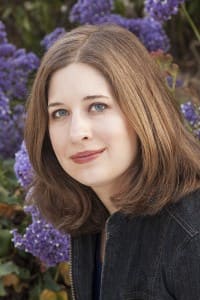
 This July at the IEA Global Conference, we shared the practice of Ayurveda which we use as a complement to our Enneagram work. The Enneagram is an amazing tool, but it also helps to have a regular, structured practice that builds up our capacity to observe ourselves so we can see our type’s automatic habits at play and choose to engage differently. Being withdrawn types who find it challenging to stay grounded, we found a practice that draws on the body’s intelligence.
This July at the IEA Global Conference, we shared the practice of Ayurveda which we use as a complement to our Enneagram work. The Enneagram is an amazing tool, but it also helps to have a regular, structured practice that builds up our capacity to observe ourselves so we can see our type’s automatic habits at play and choose to engage differently. Being withdrawn types who find it challenging to stay grounded, we found a practice that draws on the body’s intelligence.
Ayurveda is an Indian tradition of holistic healing that’s been around for over 5000 years. With its amazing specificity and individualized approach, it remains one of the most popular systems of alternative medicine in the world. Ayurveda shares the Enneagram’s simultaneous focus on the universal and the personal. It defines a healthy person as someone balanced in body, mind, senses, and soul, much like the Enneagram considers a healthy or integrated individual to be someone who’s achieved some balance between their Head, Heart, and Gut centers.
Ayurveda describes three basic doshas, or constitutions, with distinct lifestyle needs, and prescribes ways to balance the energy of each one. Often, these are basic dietary and lifestyle alterations that allow for our daily routines to become our medicine. Most people have a dominant dosha, with some having a combination of two or three, and the balance we maintain between the three doshas shifts with seasonal and life changes. All illnesses stem from an imbalance between these three energies, as compared to our baseline. In a nutshell:
Vata (air/space) people are creative, quick-moving, and erratic. They benefit from nourishing and routine.
Pitta (fire/water) people are sharp, driven, and irritable. They benefit from calming and moderation.
Kapha (earth/water) people are generous, steady, and possessive. They benefit from stimulation and expression.
As with Enneagram types, knowing our Ayurvedic dosha or combination offers a starting point for regulating our energy. For example, If Vata is your dominant influence, you might have trouble sticking to a regular schedule, and just getting to bed at a consistent time can be a wonderful practice to start with! A heated-up Pitta needs cooling food–and an increase in Vata and Kapha qualities. A sluggish Kapha, on the other hand, might benefit tremendously from spicy foods! Everyday ailments and irritants reflect imbalances too, and can be treated as such. The common cold stems from an excess of Kapha–no wonder it’s often treated with dry crackers! If you’re “wired,” that’s too much Vata in your system, and warm milk might help; if you’re suffering from heartburn, try cooling down your Pitta with something like chilled mint water.
To determine someone’s dominant dosha, Ayurvedic practitioners look at physical characteristics such as build, skin, and energy level, as well as psychological traits. Some determine dosha based on pulse reading. You can read about Ayurveda and see which dosha resonates with you (Eat, Taste, Heal is an excellent start) or take a quiz. Like Enneagram tests, they are not 100% accurate but a great starting point.
Maybe the qualities of one of these doshas sound similar to some qualities of your Enneagram type. We hypothesize that there is overlap between certain aspects of type and Ayurvedic doshas, and we’ve been conducting a research survey to see which connections emerge between the two systems. At the IEA Conference we presented some preliminary correlations. We’ve seen some interesting patterns so far and are continuing our research, with plans to publish on the full data set. If you’d like to participate in our study, with the option of getting your results and recipes tailored to your dosha e-mailed to you, you can take our Enneagram and Ayurveda survey here.
For busy people like us, Ayurveda is a wonderful and cost-effective practice to maintain. All it takes is some targeted adjustments to your eating habits and daily routines, and mindfulness of your energy as you go about your life. As with the Enneagram, it’s amazing how far a little knowledge and practice can take you!
Kacie Berghoef, MSW, and Melanie Bell, MA are Riso-Hudson Certified Enneagram teachers and three-time International Enneagram Association conference presenters. They have been studying the Enneagram for over 20 years combined and teaching together since 2012. They founded Berghoef & Bell Innovations, LLC to share the insights they’ve gained from the Enneagram and other transformational systems with the world. Learn more about their work at BerghoefBell.com.

